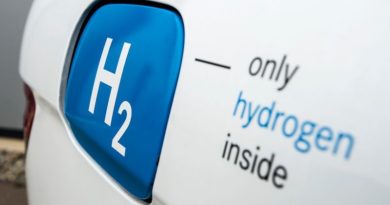
“Act” as “Action” – The Critical Raw Materials Act is the fundament of a transforming industry in Europe
A lot has changed in the last two years. The pandemic and the war in Ukraine have made us feel the consequences of interrupted supply chains and high-energy prices. At the same time, we have taken the first major steps in translating our climate goals into our regulatory framework: We have expanded and improved emission trading and effort sharing systems.
We have increased our targets for the expansion of renewable energies and energy efficiency. We have set ambitious targets for the mobility transition, hydrogen, wind and solar production.
We have driven digital solutions forward, created the foundations for a semiconductor market and set new rules for batteries. All these decisions should bring upon a “new” European industry, giving more leeway to new, but raw material intensive technologies.
Neither the projected demand nor the availability of the needed raw materials is to date secured, this is why we should put in place an active, coherent European raw materials policy. Even more, because competition from the US and China is fierce and our competitors are either better-positioned or positioned themselves better long time ago through corresponding strategic decisions.
A comprehensive approach and strategic anchoring
The draft CRMA is the result of two years of intensive discussions between the Commission, Parliament and stakeholders, giving monitoring, early warning and incentives for cross-border lighthouse projects to the European level and “homework” to EU Member States mainly with regard to adjustments in permitting procedures, data collecting and sharing as well as stockpiling. As a latecomer under the Green Deal and climate-related legislation, the European Commission has made use of its known toolbox and of the recommendations of the European Parliament. Among them: taking a future-oriented perspective, strengthening the circular economy, identifying and describing quantitative targets, mapping and exploring, closing material gaps, rethinking the list of commonly used raw materials, improving timeliness, predictability and transparency of authorisation processes, options for stockpiling, better coordination of raw materials policy at EU level and between the EU and Member States.
Other claims such as adequate financing or questions regarding the collection of waste and the handling of waste streams remained unanswered. In addition, critical raw materials have very different features and availability and are needed in very different quantities. Therefore, the one-size-fits-all approach applied by the European Commission will certainly have to be questioned. My primary focus as EPP rapporteur in the lead ITRE committee is to ensure that this legislation makes a real difference: raw material policy must be established as an issue to be obligatorily considered on all political and administrative levels and in the boards of our European manufacturers.
Secure access to and sufficient quantities of critical raw materials will decide about technological leadership, competitiveness and hence jobs in Europe.
And therefore, I think that we definitely need to harvest the lowest hanging fruit, namely the speeding up of permitting procedures – even more since we have proven to be capable to do so in the case of expanding areas for renewable energy or essential energy infrastructure.
Keeping our own house in order: Policy Coherence
As politicians and legislators, we need to keep our own house in order. The Green Deal and the climate law have led to a multitude of new legislative initiatives and adjustments of legislation, some of which developed in “silos”, propped up by policy-makers also captured in fragmented thinking. In this context, we are running a real risk of incoherent and even contradicting requirements counteracting in addition the idea of setting strategic priorities. With regard to the CRMA, the potential classification of critical raw materials as “hazardous” under the European Chemicals Regulation REACH is a classic example. Changes in waste management, air quality, industrial emissions, water, and nature conservation are other examples of policies where legislation may have an unintended negative direct or indirect effect on critical raw materials and strategic projects. As critical raw materials often come as by-products, impact is often not obvious at first sight. I therefore think it is necessary to create a “CRM filter” that must ensure that EU legislation as part of its impact assessments takes sufficient account of the impact of drafts for new or amended laws on critical raw materials supply and strategic projects. The compatibility of the 40 % benchmark for energy-intensive processing of minerals and materials under the CRMA and Net Zero Industry Act is another example that has to be analysed from a policy coherence point of view.
A last word on domestic mining
Without any doubt: We will continue to import the big majority of critical raw materials needed, this is why the forming of new and adjusted partnerships with reliable partners which are opening opportunities for businesses and trade frameworks must be high on the agenda.
Besides a much-needed European climate diplomacy, the EU – hand in hand with Member States – we need to establish energy and raw materials issues as integral part of our European foreign policy and its underlying support and financial assistance systems. However, to allow for a certain level of guaranteed independence and security, we should also exploit – where economically feasible – our domestic potential of critical raw materials, also to keep knowledge and skills in mining as a strategic competence. To me, domestic mining is also a matter of credibility: How can we ask of projects in third countries to be implemented according European standards in terms of sustainability, due diligence, environmental and social standards, transparency and innovation if we are not willing and able to put them into practice on our own continent?
Our main goal must be to handle our resources with care and in the most efficient and circular way. The currently needed higher quantities will lead us into a future in which industry will have less impact on the environment. With the CRMA, we are doing partly a centrepiece of industry but also environmental legislation. With a lot of enthusiasm and some constructive criticism, I look forward to be part of the negotiation team and I remain committed to contribute to a timeline that will deliver concrete results until the end of this legislature.




